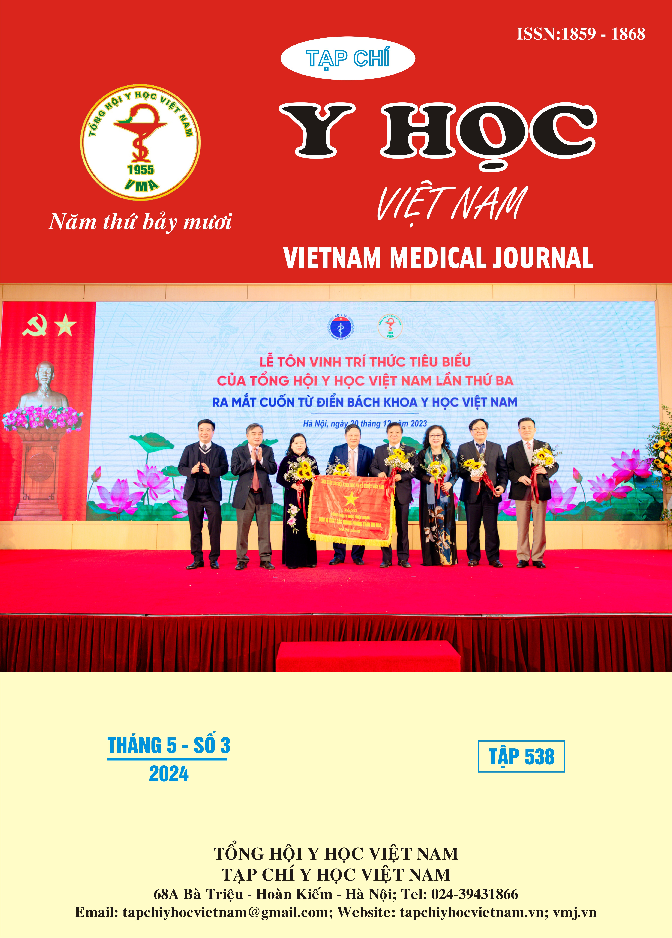EVALUATING THE EFFECTIVENESS OF PRE EXPOSURE PROPHYLAXIS (PrEP) ON MEN WHO HAVE SEX WITH MEN IN CAN THO 2022-2023
Main Article Content
Abstract
According to the World Health Organization (WHO), proper HIV pre-exposure prophylaxis (PrEP) will reduce the risk of HIV infection for groups at high risk of HIV infection. The study followed 484 men who have sex with men (MSM) who participated in HIV pre-exposure prophylaxis (PrEP) in Can Tho in 2022-2023. The results showed that the study had 346 MSM (71.49%) using daily PrEP (Daily-PrEP) and 138 MSM (28.51%) using event-driven PrEP (ED-PrEP). The proportion of subjects maintaining PrEP for ≥3 months, ≥6 months, ≥9 months and ≥12 months was respective 74.6%; 65.9%; 54.7% and 48.4%. The ED-PrEP group had a higher retention rate than the Daily-PrEP group. The main reasons why subjects stopped using PrEP were due to loss of follow-up, relocation, and no longer being at risk of HIV infection. The rate of subjects testing positive for HIV after 3 months of using PrEP was 0.56% (01 case used Daily-PrEP and 01 case used ED-PrEP), after 6 months of using PrEP was 0.63% ( both cases used ED-PrEP) and no subject tested positive for HIV after 9 and 12 months of maintaining PrEP treatment. During PrEP use, symptoms due to side effects of the drug appeared in the first 3 months: 1.7% of cases had nausea, 1.1% of subjects had dizziness and headaches; 0.3% of subjects had symptoms of flatulence. In the future, it is necessary to have specific strategies to overcome barriers such as fear of side effects, problems with transportation, housing, etc. to improve treatment acceptance and retention rates.
Article Details
Keywords
: PrEP, MSM, treatment effectiveness, HIV/AIDS.
References
2. Bộ Y Tế (2021). Quyết định số 5968/QĐ-BYT ngày 31 tháng 12 năm 2021 về việc ban hành Hướng dẫn Điều trị và chăm sóc HIV/AIDS. 123.
3. Organization W.H. (2015). Policy brief: pre-exposure prophylaxis (PrEP): WHO expands recommendation on oral pre-exposure prophylaxis of HIV infection (PrEP).
4. Pre-Exposure Prophylaxis (PrEP) | HIV Risk and Prevention | HIV/AIDS | CDC. , accessed: 20/12/2022.
5. Grant R.M., Lama J.R., Anderson P.L. và cộng sự. (2010). Preexposure chemoprophylaxis for HIV prevention in men who have sex with men. N Engl J Med, 363(27), 2587–2599.
6. Wu L., Schumacher C., Chandran A. và cộng sự. (2020). Patterns of PrEP Retention Among HIV Pre-exposure Prophylaxis Users in Baltimore City, Maryland. J Acquir Immune Defic Syndr 1999, 85(5), 593–600.
7. Hoàng Văn Minh (2020), Phương pháp chọn mẫu và tính toán cỡ mẫu trong nghiên cứu khoa học sức khỏe, Trường Đại học Y tế Công Cộng.
8. Wang H., Wang Z., Huang X. và cộng sự. (2022). Association of HIV Preexposure Prophylaxis Use With HIV Incidence Among Men Who Have Sex With Men in China: A Nonrandomized Controlled Trial. JAMA Netw Open, 5(2), e2148782.
9. Chou R., Evans C., Hoverman A. và cộng sự. (2019). Preexposure Prophylaxis for the Prevention of HIV Infection: Evidence Report and Systematic Review for the US Preventive Services Task Force. JAMA, 321(22), 2214–2230.


